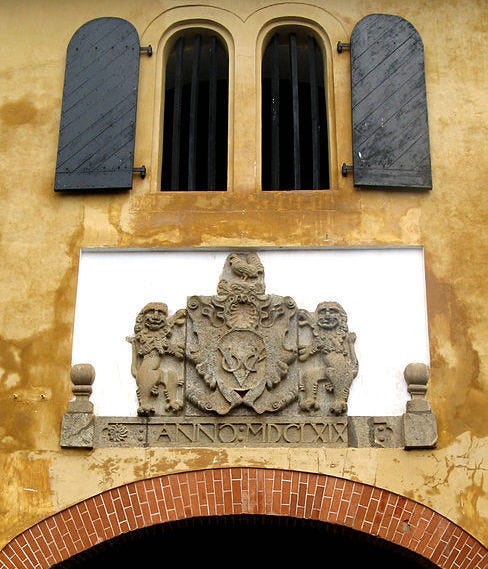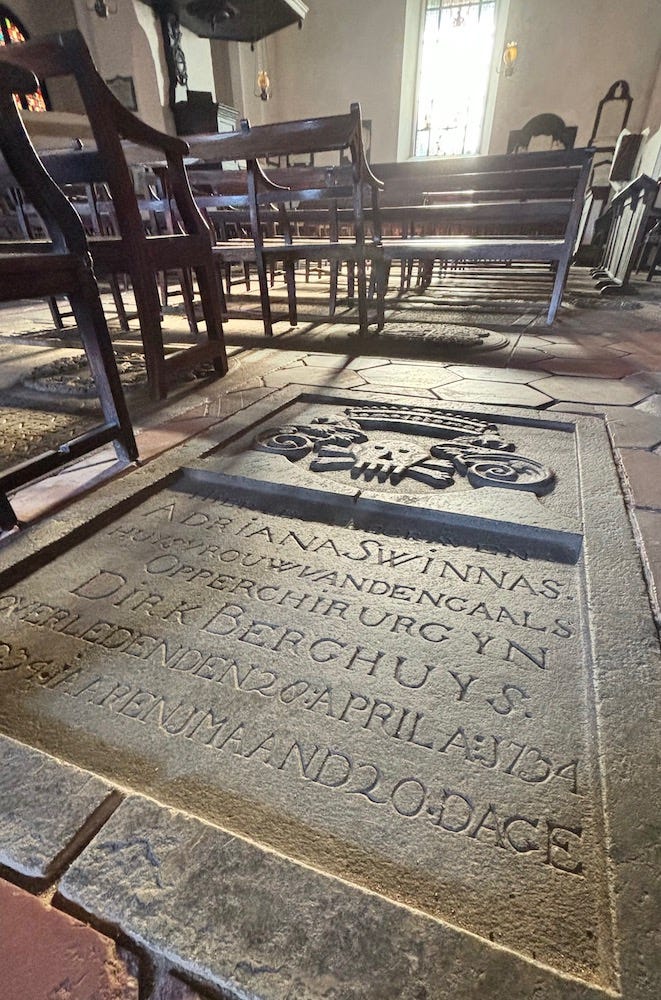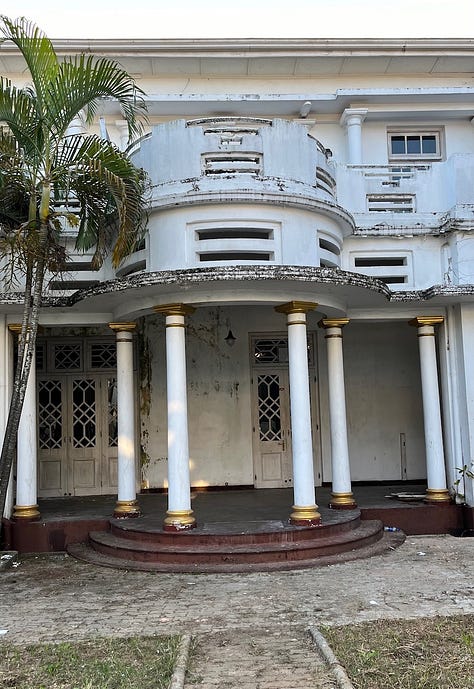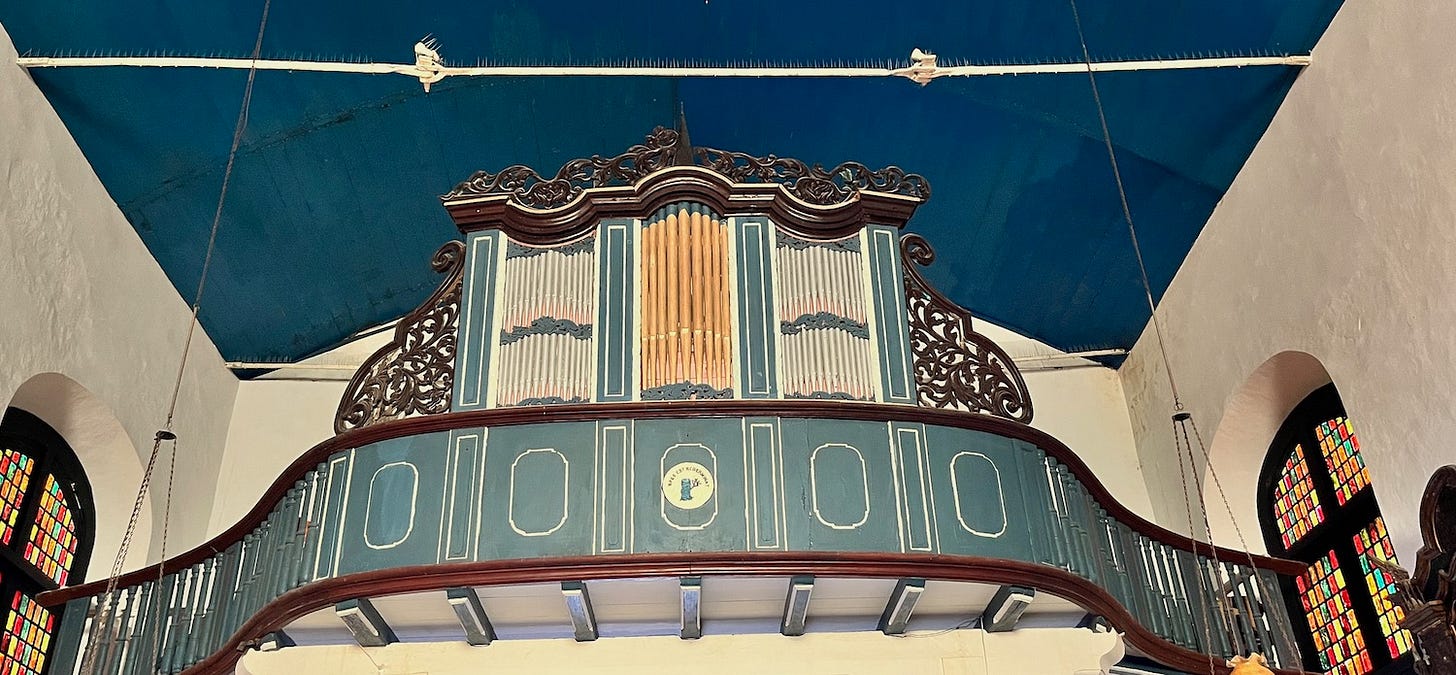# 7 Shadows of the Colonial Past in Galle Fort, Sri Lanka
On collective guilt + travel advice
I’ve been in Sri Lanka for over two weeks now, yet feel shy to write a report. Daniel and I are slow travelers, working as we roam, and compared to what this country has to offer, we’ve seen woefully little. So I’ve chosen to focus on one place that left an impression on me in an unexpected way.
Let’s visit Galle Fort together and reflect upon its dark past.
A little bit of history
On the coast, 50 km from Sri Lanka’s southernmost point, lies the port city of Galle, known for its well-preserved colonial fort. I read up on its history as the overcrowded train crawls along the seashore from Colombo.
Galle was a trading emporium long before the Portuguese built their fortifications there in 1589. When the Dutch captured Galle in 1640, they expanded these fortifications on the peninsula into the fort I will be visiting today. The British, who acquired Galle in 1796 without fighting, left the old Dutch townscape intact. Not long after, Colombo became the main Sri Lankan harbor, and as a result Galle Fort was never modernized. We can visit it today and still see how it looked back then.
Minutes after I leave the train station I meet the fort’s bastions and ramparts, meant to protect the European settlers. Riches must be guarded, they probably thought. It’s best to live behind walls when you take what isn’t yours. The impressive main gate is decorated with the VOC’s coat of arms—an imprint of my greedy Dutch ancestors. There was no state-run colonialism at first: The white men from the Dutch East India Company who built the fort were traders, robbers, capitalists.
Galle Fort now
Today, Sri Lankan men are playing cricket on the grassy fields surrounding the fort. Other locals stand beside their Tuk Tuks waiting for day trippers to go home and negotiate a fee. The sun is low on the horizon, the day’s heat already abating, but I’m sweating profusely as I carry my belongings to a bed&breakfast within the walls.
I quickly step into the Dutch Reformed Church (1755) which is about to close its doors. The caretaker asks where I’m from and I notice a hesitation in my reply; I’d rather be anything but Dutch in this town. He doesn’t blink an eye, though, upon hearing “the Netherlands.” He’s used to travelers like me. The church looks rather austere except for the organ loft and the skull-and-bones carved tomb stones covering the floor. The surrounding cemetery has even more graves, most of Dutch burghers, Sri Lankans of Dutch or Portuguese descent.


White-washed villas line the so-called quaint colonial town. Ratan chairs occupy pillared verandas. Some gabled houses are boarded up or in serious disrepair. Others have been transformed (often with post-civil-war British investments) into boutique hotels, fancy cocktail bars, or trendy shops: Opportunities to make money. The old Dutch hospital, a huge two-story colonnaded building, where VOC officers used to be treated, is now filled with restaurants, jewelry stores, and ice cream shops.
I drop my bags in my room, spray myself with mosquito repellent, and head out.
What do the cannons tell me?
I climb the ramparts behind the old Dutch hospital and photograph the cannons. Heavy symbols of war as tourist attractions. What does that tell me?
I follow the other travelers (Europeans, Russians, Australians, Indians) toward the West point of the fort to see the sunset. This small ritual usually uplifts me. Not just the sight of the colorful horizon but the idea that no matter our age or where we’re from, we witness this daily miracle together in awe. But today it leaves me cold and sad.
How can I enjoy myself wandering the remnants of colonialism? The streets are still thick with everything that’s happened here. It’s present in the stones and in the capitalist attitude of all involved. We are consumers or providers, tourists or guides, customers or sellers. Why am I the one being served the fresh coconut and not the one climbing the palm tree with my bare hands and cutting open its fruit? What did I do to deserve this lifestyle? The answer lies in my passport, the fate to have been born in a country that took more often than that it was taken. The cannons tell me injustice too frequently wins.



Collective Guilt
As a Dutch girl growing up, I learned of the slave trade and colonialism as something of the past. Something that ended a long time before I was born. The illuminated Golden Age of Dutch history was written on dark pages, but those were all behind us. Now, we were good world citizens, making donations and volunteering to wear blue helmets to protect the oppressed.
The more I ventured into the world, however, the more I realized how ignorant and harmful that perspective is. The inequalities in the world still present today are directly related to the past the West prefers to forget. And we still live at the expense of others.
I began writing a historical novel set in Indonesia before I’d ever visited the country. I told myself that what I wanted to see there only existed in the past. Therefore I was better of reading classic novels and using my imagination. During my recent stay in Bali, I came to see that a guilty conscious had probably held me back.
“Where in the world can one hide where one will not feel soiled?”
Nobel-prize-winning author J.M. Coetzee, a white South-African, wrote in his excellent novel Diary of a Bad Year.
When I discussed this guilty feeling with fellow white people, many told me: It’s not your fault they suffered, it’s not your burden to bear. And they’re right in some ways: I’m not personally responsible for what my ancestors did. Regardless, I seek to process instead of subdue the collective guilt I believe is there.
The pitfalls of white guilt
White guilt, as my feeling is sometimes called, has pitfalls. It can lead to pity or even contempt—look at these poor people we abused, how we turned them into helpless creatures. It can lead to the inability to criticize others—who are we, the sinful, to lay blame? (Read Pascal Bruckner’s The Tyranny of Guilt for more on this subject.) And it can lead to undeserved catharsis and self-congratulations—look at me being enlightened and compassionate, shaming myself to prove my innocence.
I don’t yet know how to avoid these pitfalls completely. Speaking about my discomfort of wandering a colonial town turns the gaze back on me, which isn't the point. But not acknowledging collective guilt must surely be worse. The fight against exploitation starts with awareness and shame over what has been done and is still being done in the name of humanity.
“I travel in large part in search of hardship—both my own, which I want to feel, and others’, which I need to see. Travel in that sense guides us toward a better balance of wisdom and compassion—of seeing the world clearly, and yet feeling it truly.”
British author Pico Iyer in his essay Why We Travel.
So I walk around with my discomfort and pay it attention. I try not to seek a cure or ask to be absolved. I reflect upon my entitlement and complicity, hoping it will inspire me to use my privilege as a positive force. I may not have the power to realize drastic change, but I can at least bear witness to the massive ongoing unfairness of it all. I can educate myself and be less ignorant. I can listen to local concerns and speak up. I can travel more mindfully. I can support local family businesses instead of large foreign conglomerates. I can boost my empathy and compassion. I can look at the cannons, hear what they tell me, and choose to be respectful and kind.
Concrete Travel Advice
When in Colombo, stay with Gayathri. She manages three bright and comfortable rooms (with shelves full of books in English) on the second floor of her home. A perfect choice for when you arrive in Sri Lanka for the first time. She’s a true host, full of advice, and lives in a safe neighborhood with a local market at walking distance. Tuk Tuks booked on Uber arrive within minutes and take you everywhere in the city for just a few dollars. She prefers you make a booking on AirBnB: Colombo 7 Charming Home Stays. (I make no commission.)
When taking the train from Colombo to Galle, book in advance if you want to travel first class. Tickets sell out soon after they go on sale, which is 30 days in advance. You can also buy second or third class tickets the day itself—we paid 500 LKR a person, which was $1.55 at the time. These tickets never sell out, which means, there are more people on board than there are seats. Some trains leave from Fort Railway Station, but others leave from Maradana Railway Station, which gives you the opportunity to board before the majority of other passengers get on. Even then: This is not a secret, so arrive early. The train will be on the platform nearly an hour before departure. Sit on the right side of the train near a window for the best views and the breeze. Don’t forget to bring sunscreen, sunglasses, and a hat because with the view comes the sun.
When in Galle, stay with Dimuthu at Villa Yehinsa. He runs a five bedroom house inside the fort walls: two on the ground floor facing the breakfast garden, two on the second floor with small terraces, and one on the roof. The top room is the best: a large breezy private terrace that we called The Bird Watcher’s Nest. The air-conditioned rooms are basic but clean and the Sri Lankan breakfast was the best we had on the island. He prefers you make a booking with him directly, so the booking platforms don’t take their cut. Phone: +94 77 901 6564 (best via WhatsApp) // E-mail: villayehinsa@gmail.com. (I make no commission.)
Hungry in Galle? Eat at Lucky Fort restaurant, where they serve you a set meal of ten delicious (mostly vegetarian) curries with extras such as papadums and sambol. The family-run place has a lovely small terrace away from the overly touristic streets. They also provide cooking lessons.
Time to Say Goodbye
I’ll be traveling for two more weeks in Sri Lanka. I won’t be seeing whales, because the majority of tours are unfortunately unethical, chasing the animals instead of admiring them, but I might visit some free roaming elephants.
All my best,
Claire
P.S. Read Sharon Olds’ poem Ode to my Whiteness for an artful understanding of privilege and read Ode to my Blackness by Evie Shockley to whom Olds was answering.







Greetings Claire, I’ve been following you on Facebook and Substack. AMAZING is the one word I need to say to you.
I’m not sure how we became friends, but like you, I have traveled a lot—and now have hundreds of new stories I will share with my co-author, Andrew Wakeford on our Substack. Please take a look at our new site, Portraits of US! I’ll certainly will keep up with you and your beautiful writing and travels. I love how you are taking your passion and making it happen! Congratulations!
That is the part of traveling that makes me feel horrific! The history, the colonialism, the hell we have put most of the world through! Thank you for sharing your ENTIRE experience! The LOVE, the BEAUTY, and the AGONY! LOVE YOU, xooxoxo